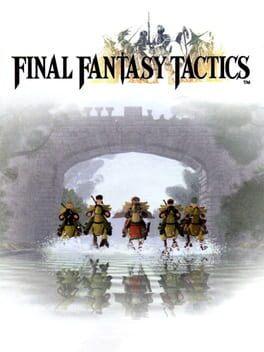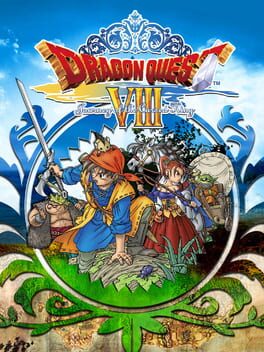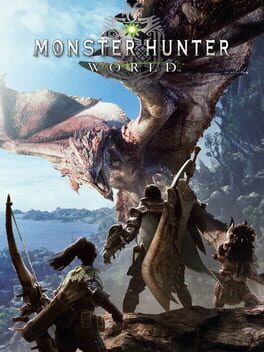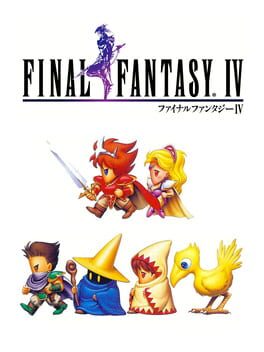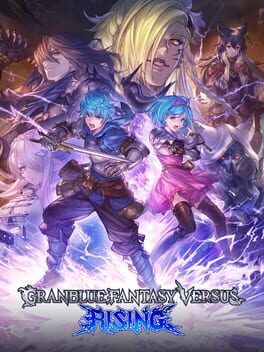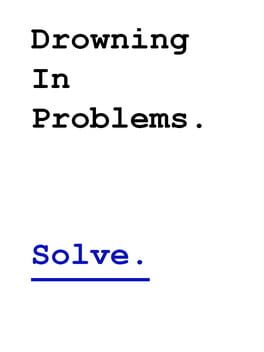QuentTheSlayer
Just a guy playing some games.
Badges

Treasured
Gained 750+ total review likes

Famous
Gained 100+ followers

Adored
Gained 300+ total review likes

Trend Setter
Gained 50+ followers

GOTY '23
Participated in the 2023 Game of the Year Event

Loved
Gained 100+ total review likes

Gone Gold
Received 5+ likes on a review while featured on the front page

Donor
Liked 50+ reviews / lists

Pinged
Mentioned by another user

GOTY '22
Participated in the 2022 Game of the Year Event

Full-Time
Journaled games once a day for a month straight

Popular
Gained 15+ followers

2 Years of Service
Being part of the Backloggd community for 2 years

Well Written
Gained 10+ likes on a single review

Roadtrip
Voted for at least 3 features on the roadmap

Best Friends
Become mutual friends with at least 3 others

GOTY '21
Participated in the 2021 Game of the Year Event

Liked
Gained 10+ total review likes

Noticed
Gained 3+ followers

On Schedule
Journaled games once a day for a week straight

Gamer
Played 250+ games

N00b
Played 100+ games
Favorite Games
401
Total Games Played
003
Played in 2024
203
Games Backloggd
Recently Played See More
Recently Reviewed See More
Balatro was immediately very addicting and had a great sense of style with the CRT filter, the amazing music creating this laid back atmosphere, and generally nice visuals with pop and flair that never made it boring to look at. You play poker hands to score a certain amount of chips per blind, with eight innings in a given run, winning a run allows you to keep your build going in “Endless Mode” which I never personally delved too much into, but was fun to limit test my decks from time to time. It’s easy enough to understand quickly as well, play poker hands, augment your cards, buy stuff in the shop, find jokers to help make your deck or specific hands better as the chip demand increases per blind. It’s an incredibly simple premise with a lot of satisfaction seeing the numbers go up and watching everything work in tandem like a symphony. It’s no doubt this was fully why I was so enamored by Balatro and found myself playing for several hours at a time. Getting a good build going has that same knowledge requirement and experimentation as the aforementioned rogue-likes, so in this regard, Balatro hits it out of the park, while somehow being more approachable and simple comparatively as well.
It wouldn’t be Balatro without those trusty jokers though. There’s one-hundred and fifty of them in total, each providing a different benefit or effect that will change how you’re playing, and what you build towards. While not every Joker will be unlocked from the start, unlocking them is just as fun as using them I’d say, with a plethora of different unlock conditions for each of them. Others may require you to cater a run specifically to unlock them, but that’s hardly asking much considering their benefit for you in future runs once unlocked. While most jokers will offer you added multiplier and chips to help you clear ante’s, others are a bit more exotic in what they do. For example, “Even Stevens” is a joker that only adds multiplier to cards that are evenly numbered, to the much more niche jokers like “cloud nine” that will provide you a dollar per nine you have in your deck, which could influence you to add/create more nine’s to keep that economy engine going, which may have you running four or five-of-a-kind later on. This sort of snowball effect with jokers is very entertaining and practical for endgame scaling, it all works together very well, not every Joker can be a winner, and some Jokers you’d do well to help you early on, but abandon later due to their poor scaling. With that said, every Joker is a treat to not only look at, but figure out what it does and if you can include it in your build or not, that constant experimentation is what will keep this game alive far past its relevance. It doesn’t even end there as Jokers also have certain rarities that will augment the Joker to provide further benefits, such as additional chips, multiplier, or even an extra Joker slot, which can make taking certain niche Jokers far more viable and interesting.
If Balatro’s core gameplay is losing its luster, playing a new deck is always a good way to spice things up. Initially, Balatro will set you up with the Red Deck, which gives you one extra discard which is decent for a starting deck, but certainly not my first choice. Thankfully unlocking decks is relatively simple, and you’ll quickly have a decent selection you can pick from. The Blue Deck grants you an extra hand every round, arguably more valuable than the Red Deck’s extra discard. Yellow Deck starts you out with ten dollars, allowing you to potentially augment your deck and claim some powerful jokers early. While the first few decks grant you early advantages you can attain in any run, later decks will start changing the fundamental building blocks of the deck itself, as well as mechanics. From the tattered Abandoned Deck that has no face cards, to the appealing checkered deck that only has the spade and heart suits within its library. Every deck emphasizes a certain kind of play, adapting and recognizing them is half the fun, but are varied enough to keep the game fresh and interesting each and every time you make this decision before starting a new run. While the requirements to unlock later decks can be a bit demanding, they no doubt further change how you’ll perceive the game, as well as making specific setups, jokers, and cards far more valuable than they normally would be.
Difficulty in rogue-likes is a delicate balance of luck and skill, Balatro I think mostly sticks the landing here, with a few caveats. Balatro has multiple difficulties you can test your poker-playing skills against after you win a run with a specific deck. Each won run will unlock a new “Stake” which makes the game a bit more limited. From increasing the amount of chips to win per blind, to reducing your money-making, Balatro is rather creative and smart with how it limits the player without drastically altering the core gameplay. I think most of the difficulties here are very pleasant and force you to adapt to them without being frustrating or feeling unfair, which is very important to stress. It becomes even more important when you consider the fact every restriction each stake presents will continue to be applied to every stake afterward, making those last few stakes have a lot you need to keep in mind and strategize around. Let me be perfectly blunt here: Balatro stays incredibly consistent until you reach the Orange Stake. Originally, Orange Stake would begin to increase the price of booster packs incrementally each ante you cleared, by ante eight, the price of booster packs become ludicrous and not worth it. This made specific strategies entirely useless since there was not even a guarantee a useful card would be inside the myriad of different pack options the game presents to you. This further reduced valid strategies and would force players down the route of utilizing high card and pair builds since those hands were the most reliable to play. Without packs, rigging the deck in your favor basically became near-impossible and deeply frustrating. The ratio of luck and skill becomes heavily skewed in Orange Stake, which certainly did not leave me impressed, rather a lot of the flaws in Balatro became far more noticeable to me unfortunately. The reliance on luck to get a good run going was just far too inconsistent to me, and skill was rarely rewarded as much by this point, it certainly was… harrowing.
Gold stake was an even worse offender since it reduced your maximum hand size by one, making certain hands like flush and straight infinitely harder to pull off. All of this served to shatter any balance between luck and skill tremendously, and is by far the worst part of Balatro, or I should say was. Balatro has since been updated, making both Orange and Gold Stake have entirely new gimmicks that don’t fully fix the problem, but are ultimately much better for the game. Orange stake now adds “perishable” jokers which will lose their abilities after five rounds of use. There is a thirty percent chance of any Joker having this perishable sticker, so while it still involves some luck to not get every Joker with this sticker, allowing the pack avenue to stay open can allow for far more strategies and certain hand types to remain viable, which is a very significant improvement. Gold stake has had a similar change with “rentable” Jokers, these Jokers initially only cost one dollar in the store, but at the end of every round, they will charge you three. Not only does this once again not remove the luck factor, but it essentially prioritizes having a good economy or way to make money early, but still far better than what Gold Stake was before. Even with these changes, I think Balatro truly shines at its best on the easiest difficulty: White Stake, and when you’re simply able to have fun and enjoy the game without these restrictions. While the higher difficulties deserve their time in the sun, I don’t think they’re fully necessary to have a complete experience, but if you’re looking for a challenge, you’ll certainly get one!
Balatro does explore other avenues for challenge though, much like its contemporaries. Challenges that alter the rules of the game and force you to adapt to them are always a welcome addition to any rogue-like, and Balatro does a great job here. There are twenty challenges to sink your teeth into, and while they can’t all be winners, the few I had the pleasure of playing, I really enjoyed. Omelet was a particularly fun one, and the first challenge among the list where you will earn no money from any source except selling off cards, and you start with five “Egg Jokers” that increase in value every round. The idea is to sell them off only when you see something you absolutely want or need for your build, which I really liked, it made money far more valuable and really made you weigh your options rather than just burning money whenever you had it in the normal rules. This is just one example, but the challenges here felt very thought-out and valid to have in the game, while some of them can be a bit difficult to grasp or succeed in, it wouldn’t be a challenge if it wasn’t so.
I want to address a bit of controversy about Balatro in how it simulates gambling. The creator himself has denied this design philosophy, but admits the game does have risk/reward elements like any other Rogue-like would. I’ll be the first to admit Balatro became incredibly enticing and hard to put down for me personally, but The Binding of Isaac and Enter The Gungeon were even more so, with five-hundred and eighty hours, and over one-hundred hours respectively, Balatro barely cracked fifty. This is not to say these games are to be avoided or also replicate “gambling” but I do want to say these games are indeed very addicting, but for Balatro I also do not think it’s anywhere close to gambling, at least not any closer than a game like Vampire Survivors which was equally criticized for “replicating” something akin to a slot machine. While I don’t want to delve too deeply into this topic, just know upfront the game should not be affiliated with the negative contexts of gambling, but is certainly fun and hard to pull away from, but so are many other games, especially Rogue-likes.
Some closing thoughts on Balatro as a whole. I think the game is rather remarkable to say the least, while I think certain hand types like flush have far more supporting jokers than something like straight, the general balance and freedom to build whatever deck you want is very satisfying and is really refreshing to play if you’ve been stuck playing basic poker so long. Rigging the odds in your favor by improving your cards, copying them, or outright destroying them are all simple yet effective and provide enough decision weighing to make it very engaging each and every single time. I think the game hits the right difficulty mostly, orange and gold stake to me rely a bit too much on luck even after the changes to find them too compelling or fun, but I’d be doing a huge injustice to say it wasn’t damn satisfying to complete those stakes, much like going all-in when you’re sitting on four-of-a-kind in real poker. Jokers by themselves will define how you play and what you can build towards, but aren’t always so paramount to not experiment with what you can do in any given run, and most have general use to maintain that freedom of expression within deck building that is very much welcome, but also has room for oddly specific Jokers that can turn a simple run into a God run in just a few seconds. At first Balatro dug its hooks deep into me, though overtime it weakened its grip and has comfortably landed somewhere for me as a remarkable game, but not a masterpiece I once thought when doing my first handful of runs. Regardless, I enjoyed my time with Balatro and will be happy to boot it up for a few games every now and again, but certainly not grinding it like I once was. Thank you all for reading this shorter review on Balatro, I’ll see you all in the next one.
Monster Hunter World creates a strong impression right away with the beautiful graphics, the presentation, and the first few cutscenes. While graphical fidelity isn’t necessarily Monster Hunter’s selling point, I must admit this game looked rather gorgeous, though the colors are a bit muted which seems to be a departure from other Monster Hunter games, but Rise seems to have gone back to the original artstyle. You create your character, you create your loyal Palico comrade, and are treated to some cutscenes. This is where we run into our first problem with this game, is the unskippable cutscenes. While I don’t skip cutscenes for my first playthrough, if I were to play Monster Hunter World again, I’d also have to sit through these cutscenes again as well, and they’re not necessarily short ones either. This normally wouldn’t be a big issue for me if the story was good, which we’ll get to, but the fact you cannot skip cutscenes is a minor blemish all things considered, but still odd.
The story of Monster Hunter World has some promise at the beginning, but never really does much with it really. A lot of the “story” is just to give you a reason to be fighting a specific monster, which works, but since these cutscenes are unskippable and typically uninteresting and long, they certainly don’t do much to hook or captivate the player as far as the plot goes. With that said, the cutscenes do a phenomenal job at introducing us to a new monster, as well as tease some of their capabilities when you actually fight them, which I really liked. Had Monster Hunter World focused entirely on the monsters themselves, and not the reason why you’re fighting them, I think it'd have benefited greatly from it, because any cutscene not involving a Monster introduction I found little to no reason to fully pay attention to since all it’s really doing is stringing things together for another encounter. I suppose that’s the point, but characters and dialogue in general are just bland to me, I’d rather just skip them to play the game instead. Except for the Huntsman, the Huntsman was alright.
Monster Hunter World’s gameplay is incredibly complicated with tons of moving parts, I find it both great and bad in a lot of cases, let’s get into it. I’m going to address my positives with the gameplay first, and then the negatives.
Monster Hunter World has a fantastic selection of weapons that each have their own playstyle, strengths, weaknesses, and builds with tons of customization and flexibility that allow you to tailor yourself for a specific monster, or to compensate for a weak aspect of your weapon or playstyle. I found myself very drawn to the Long Sword for its design alongside its good range, great damage, and decent mobility. It’s by all means a universally good weapon with very few drawbacks, however it’s a very difficult weapon to master. I also dabbled in Dual Blades, and the Greatsword, but ended up using Long Sword exclusively for my whole playthrough. While I can’t comment much on other weapons, they each have unique purposes and quirks that give them just as much reason to use than any other weapon, they all feel viable and useful. Dual Blades for example have a lot of hits and DPS, so it’s good for applying status ailments, Insect Glaive is great for mounting, Great Sword is great at shattering monster parts, and bow is a ranged weapon that can keep you out of harm’s way with plenty of options to deal good damage. Learning your weapon however can be quite the endeavor, as you’ll have to put in time to become efficient with them and understand their limitations. Since this was my first Monster Hunter, I ended up spending a lot of time in the training area for the first twenty hours or so just trying to understand my weapon and everything about it, which can definitely be a difficult hurdle to get across, but it’s worth it in the long run. Not every weapon is complicated, Dual Blades are incredibly simple, as well as the Sword and Shield, both are also very solid weapons that don’t fall behind the others, which is important to stress, simply pick the weapon you like the most.
Most weapons have sharpness you will have to manage while hunting monsters as well. Sharpness is incredibly important because the sharper your weapon is, the better damage it will do, and the less likely it’ll bounce off a monster's tough hide or skin. There’s many different “levels” of sharpness, purple being the best, and red being the worst. You’ll always need to check your sharpness meter often to make sure it’s not getting too dull, usually yellow sharpness is around the best time to find a moment to sharpen, though I personally always sharpened after a monster ran away to ensure maximum damage and wouldn’t need to worry about my weapon becoming dull in the middle of a scrap. I think the game does a great job overall giving you plenty of opportunities and big openings to sharpen your weapon, even during encounters, but sharpness is a very committal action that’ll get you punished since it can take awhile to do, but there are ways around this issue, such as special sharpening tools and a skill called “speed sharpening” which is pretty self-explanatory. I liked the sharpness mechanic quite a bit because by being diligent with it, you’re rewarded with more damage and less risk overall of being in a tight spot, of course if you really needed to sharpen in the middle of a fight, despite how long it is to do, you can always roll out of the animation, which is nice, there’s also some special sharpening tools that make it much faster as well.
Armor, charms, and decorations are essential building blocks to a hunter’s survivability, there’s a lot to it, but a lot of it is quite good. You’ll start off with some rather meek armor, but once you overcome your first monster, you’ll be ready to upgrade your gear if you so choose. This decision-making of which monster to hunt for their gear is the majority of your monster hunting experience, and there’s plenty of options. I think the idea of both grinding a monster for drops, while also being able to re-fight your personal favorites makes for a very strong gameplay loop that keeps you engaged for a very long time, I very much enjoyed grinding Rathalos and Odagaron for my high rank gear that lasted me until I got to the DLC. On the flipside however, fighting a monster for a specific piece of gear you don’t enjoy fighting, or simply never getting the drop you need can be very unengaging and bloat game time quite a bit, but generally I think it’s a positive since fighting the monster a lot will let you gain mastery over it, letting you shave seconds each and every time, which is its own reward to many. Of course, if you don’t care about this and just wish to progress, most monsters only need to be fought once to progress the actual game, there’s also other methods to get more drops from monsters if you need. Charms is another piece of equipment crafted from monster parts that allow you to gain a specific skill you might want, or your armor might not provide, from attack boost, to critical eye, you name it. I opted to go for the Health Charm since it increases survivability a lot, which you’ll need if you don’t have stellar armor, but you can make anything work really. Decorations allow you to slot in even more skills if your armor has decoration slots, your weapons can also have some. Decorations really allow you to be flexible with your builds outside your armor, which lets you slot in what you want to have, which I really like because there’s so many skills to choose from, plus it helps make experimenting a bit easier without crafting an entire new set of armor. Overall, building your character up, the armor, and the grind for the materials are all fantastic and kept me playing Monster Hunter far longer than I would’ve normally, but that’s by no means a negative, I very much enjoyed the progression, it felt rewarding, significant, and not too slow to where it dragged much.
Mantles are another idea in Monster Hunter I really enjoyed because it gave even more customization, but also allowed you to handle certain fights and situations much easier. Mantles come in many forms, from the vitality mantle that gives you more health, temporal mantle that gives you invincibility for several attacks until it wears off, elemental mantles that lower specific elemental damage, like fire, and the rocksteady mantle which prevents your attacks from being interrupted by attacks while still taking reduced damage. While they’re not essential for hunts, they allow a lot more room for error, or simply make it easier, especially if you’re struggling with a monster, crafting a mantle can mean the difference between a win and a loss. I personally opted to use the Vitality and Temporal Mantle, and I couldn’t tell you the amount of times it saved me in a pinch, it does take a second to actually put on the mantle, so keep that in mind. The drawback of mantles is they’re on a timer, once you put it on, the mantle will slowly lose its energy until it blacks out entirely visually, this is when you need to take off the mantle to let it recharge. I like this idea of having to be diligent with the mantle, but in a tough battle, it’ll be hard to find a moment to take it off sometimes, even though it only takes a second to do so, but make sure to get everything you can out of them, because once they run out, they’ll be out of commission for a decent length of time. If you’re not particularly interested in using a mantle, there’s also “boosters” which create an area of effect that can increase your weapon affinity, heal you and your allies, and remove status ailments, I never personally used these since I found mantles infinitely more useful and versatile, but also because boosters have to be placed and have a small area of effect which can be difficult to utilize in fights where the monster is constantly repositioning, or you the hunter have to reposition due to the monster’s attacks.
The slinger and environmental hazards are two components of Monster Hunter World I very much enjoyed overall. The slinger is this arm mounted crossbow every hunter worth their salt uses and will utilize on hunts. In order to use the slinger, you need ammo, which can be stones, to moss, to any number of things really which can then be used to trip environmental hazards, as well as against monsters. Against monsters, there’s a few specific things you can do with it, like getting their attention, but most importantly it can allow you to stun or stagger a monster. Specific ammo types will allow you to interrupt a monster’s attack, granting you a big opening at your discretion which is pretty much an essential mechanic in later fights, but can be neglected early on. Not all ammo can stagger unfortunately, which is a small negative I think makes sense in theory, but would allow all ammo to be invaluable instead of only a select few. The slinger also allows you to shoot special crafted ammo you make yourself, such as flash pods to stun the enemy for a long period of time, as well as forcing flying monsters to crash back down to the Earth, providing a gigantic opening and is almost essential for monsters like Rathalos, to the more obscure screamer pods that create a high-pitched noise that’s particularly useful against the likes of Diablos. Flash pods are more universally useful though, and in base Monster Hunter World, they’re a tad overtuned, making certain fights an absolute joke, so I opted to not abuse them much but is something to be aware of. I think the slinger’s most important use however is triggering environmental hazards. There’s a few cutscenes in-game that showcase this idea which I really like, though they still give you a tutorial on it which is understandable, though I’d much prefer to have put two and two together. Environmental hazards are usually unstable formations above monsters you can hit to make them come crashing down, like rocks in the ancient forest, to giant crystals in later areas. Though not every environmental trap needs the slinger to activate, some of them work if you can attract the monster to where they are like vine traps, which entangle the monster for several seconds, allowing you to get a lot of damage in! It’s up to you to take advantage of these environmental traps however, and they’re not guaranteed as you need to get the monster in position and either stun them or knock them down to do it, or get very lucky where they just don’t happen to move. If you do successfully hit a monster with one of these hazards, they will take a large amount of damage and automatically topple, giving you an opening on top of the high damage, which is incredibly beneficial and can make hunts go way faster if utilized well. Traps can also help you break monster parts which we’ll get into in a bit, but overall environmental traps can turn the tide or snowball your advantage momentously, and I quite loved the interactive environmental aspects a lot, there’s other things you can trigger as well like swarms of flashbugs to flash a monster, water geysers and lava geyser that deal passive damage as the monster stands in them, and environmental destruction from rampaging monsters among other things, such as Rathalos attacking the rocks in his nest to cause the water behind it to rush out, potentially flinging him off the cliff along with you if you’re not careful. It’s truly an interactive world, which I really appreciate as it helps the immersion aspect a lot, and again just very helpful to gain an advantage if you’re paying attention.
My absolute favorite aspect of Monster Hunter World are the monsters themselves. If you actually decide to not attack them and watch them from a safe distance, you can observe them, how they interact with the environment, other monsters, and themselves. For example, you can watch a Rathian hunt for food, you can watch Barroth try to cool itself off in the mud, and you can see even more intimidating monsters like Nergigante ( my personal favorite monster) groom himself and just walk around peacefully. These dynamics make these monsters feel real in an actual environment, not just boss fights that net you rewards. I think they absolutely nailed this aspect, since while even fighting monsters, they’ll often retreat to their nests to rest and restore their health, and if you take too long you’ll be at a further disadvantage. Turf Wars help emphasize these monsters are territorial not only to you, but other invading monsters, and will fend them off best they can. Mechanically speaking, Turf Wars always end in a tie as both monsters deal a massive amount of damage to each other alongside a unique animation. After this is over, the monsters can still fight each other with their normal attacks, which can drag on sometimes depending on the monsters, but you can sling a dung pod to drive off any monsters you don’t want to deal with. Usually the monster who invaded the territory of another monster will leave, feeling threatened, which thematically makes a lot of sense in some cases. In other cases, it makes less sense depending on the match-up, but I think the idea that every monster has a chance to beat another monster that is stronger than it is definitely possible. All of these monsters have specific routes, nests, and interactions that give them consistency to feel very real, and I absolutely love it. It was always a highlight to watch, and undoubtedly my favorite part of the game besides actually fighting the monsters.
Fighting monsters is one of the biggest selling points of Monster Hunter, so is it any good? Yes, very much so. When you’re fighting a monster, they have specific weak points you can take advantage of to deal higher damage than normal, and not every monster has the same weak points, which not only makes a lot of sense, but ensures not every fight feels the same. Some monsters might have weak arms, some might have soft tails etc. It’s up to you to figure out where the weak points are, though there are resources in-game to figure this out as well without guess-work, which I appreciate not having to look up a wiki to do so. There are some universal weaknesses though, monsters with large legs can be attacked to stagger them, if you damage their leg enough though, they might just topple over, completely at your mercy. This allows for a consistent strategy against monsters, especially new monsters you haven’t fought yet, but it’s not always guaranteed or ideal, since some monsters have very strong legs. One of my favorite parts of the combat though is part breaking. If you attack a specific part of the monster long enough, it’ll eventually break, which not only severely lowers their defense in that specific area, but it can also drastically weaken the monster. Let’s take Rathian as an example, Rathian has a tail flip attack that deals severe damage and can poison you, so this incentivizes you going for her tail, since if you cut her tail off, it’ll make her arguably strongest move much weaker. Not only does this give you a huge advantage to sever her tail, but it’s so satisfying watching the tail get cut off and go flying, you even get an extra carve from it, which basically means you get another drop from the monster, which can net you really valuable materials. Tail cutting isn’t the only part you can go for though, as monsters all have specific body parts they rely on for attacking that breaking will cause their moves to become far less dangerous, and in some cases, slow them down, or cause them to have much larger windows of opportunity to attack them. On top of all of these advantages, part breaking can topple the monster as well, which gives you even more opportunities to break parts which will eventually snowball you to breaking multiple parts in a row, which is so much fun to do and really rewards you as well. Each broken part will also give you an extra material after the hunt is over, further emphasizing part breaks, you can also destroy highly resistant parts of a monster to make them take solid damage in that area for the remainder of the battle. Part breaking is an essential component of hunts, and a very fun mechanic as well, once you figure out what part of their body the monster uses the most to attack with, or what its most dangerous attacks utilize, it becomes a glaring target for you to go for, which I love a lot, and was just another aspect of this game that made me put in so much time playing it.
As far as the monster’s attacks themselves, well it’s a bit of a mixed bag. On one hand, there’s a lot of attacks in this game that feel well telegraphed and fair, allowing you to anticipate what the monster will do, and react accordingly by dodging or moving out of the way. On other occasions, some moves have some wild hitboxes that felt very deceptive in their size and range. One thing I need to stress about Monster Hunter World is how a monster’s attack pattern is entirely random. A monster may just use their worst attack three or four times in a row, and there’s not much you can do about that besides using slinger to stun them, avoiding it, or just getting hit. I think this randomness factor works since these are monsters, and just like animals, their behavior will be unpredictable, so thematically it all checks out, but mechanically it can feel utterly unfair at times. If a monster decides to just not give you many openings, or keeps moving around and you have to chase them down a lot, it can become rather annoying and hurt the pacing of the battle. Let’s not forget every hunt outside expeditions have a time limit, so the less time you’re attacking, the more that clock is ticking down. I will say in base game, the clock usually never played a factor in victory or success for me, but it’s definitely something that became an issue later on. I didn’t really notice these issues until the endgame, since most of Monster Hunter world is actually rather easy once you get the hang of it, but in the endgame it starts getting a little ridiculous. Some moves have barely any start-up at all, so reacting to them is a nightmare, insta-kill moves, ridiculously sized attacks etc. This definitely bogged my experience down somewhat, though it wasn’t super consistent enough for me to feel like it was a pressing issue a lot of the time, but it’s definitely there. Some monsters are better than others in this regard, though like any game, some monsters are incredibly well designed, some are incredibly poorly designed. Some of my least favorite monsters were definitely Black Diablos, Uragaan, and Kirin for reference. My favorite fights include Nergigante, Teostra, and Odagaron. My biggest issue with the combat really just boils down to some moves either being too strong, too fast, or just having weird hitboxes, everything else is either fine or manageable, especially in a multiplayer environment, I’d even argue some of these criticisms disappear if you’re playing with one other person like I was, but when playing by myself, these flaws became much more apparent.
Monster hunter world was one of the best multiplayer experiences I’ve ever had. Even though I only played with one other person, being able to share this experience with them and fighting giant monsters together was always fun. Even in the more difficult fights, having someone to rely on is comforting, but always keeps the fight engaging since teamwork becomes essential in multiplayer. Monster’s gain much more HP the more people are in a hunt, so everyone needs to usually pull their weight for a hunt to be a success. Having an ally to split aggro can help ease pressure and give you a moment to heal or buff up if you need, but makes the monster a bit more chaotic to predict, which I honestly preferred, made things more interesting, plus the trade-off of being able to take a breather was very welcome. Allies can hit you out of stun and other nasty aliments as well, heavily rewarding teamwork as you’ll both be keeping an eye on each other if you’re ever in a bind, which is pretty much essential in the endgame. There’s plenty of multiplayer support skills like wide range that allow you to support your team further by allowing you to heal some of your allies’ hp by drinking a potion which also heals you, as well as buffing items like might and adamant seeds. Of course, multiplayer has drawbacks as well, hitting your allies with your weapon will flinch them, interrupting their action for a second, in which case they’ll need to do it again, though the flinch animation actually has some i-frames on it, so it can have incredibly niche use in that regard. You can run flinch free to prevent this, and if you’re with a LongSword player like myself, I’d recommend it, ‘cause LongSword is very well-known for flinching allies, which can be frustrating for sure. I have to admit though, I vastly preferred my Multiplayer experience compared to my Single Player experience, which we’ll get into, but I was thoroughly impressed with how thoughtful and fun the Multiplayer was speaking strictly mechanically, because Multiplayer has its own specific issues we’ll also get into in a bit. Overall though, a must-play with friends if you can get them together for it, because it’s incredibly fun. I'd argue half of my enjoyment was just from reacting and making callouts in call to my teammate. Truly a one-of-a-kind experience.
For singleplayer, you have your trusty Palico friend to help you against monsters. The Palico, much like another hunter, can split aggro for you, heal you, and help deal damage to the monster. I very much liked the Palico not only for this, but because they’re just a very loyal and charming companion that has a lot of cute dialogue and interactions with your hunter. They really made it feel like you were a team with quite a bit of history before the game began. You can also craft gear and weapons for your Palico, which helps them scale up with you as monsters get tougher, and honestly my Palico was absolutely invaluable, even in Multiplayer. I decided to give my Palico a paralysis weapon, which gave me so many openings to attack the monster with, even if it was uncommon, over the playthrough it saved me so many times, and helped me clutch victory. Unfortunately, the Palico isn’t all positives, as if you’re by yourself, you have to rely on the Palico to get you out of specific status ailments. Stun and sleep are the two big ones that you really need your Palico to get you out of. Stun and sleep leave you wide open to be killed, but you can ping your Palico to hit you out of these… unfortunately the Palico is not consistent with doing this. Sometimes they’ll be on top of it and hit you every single time, other times they’ll ignore your cry for help and watch as you die. Because of this, relying on your Palico for these situations is incredibly risky, and I personally ensured this never happened because I didn’t trust my luck. Otherwise, the Palico is incredibly useful, especially for a support role. I gave my Palico vigor wasp spray the entire playthrough alongside a status weapon, and they were an invaluable part of my team and strategy, so overall Palico was an awesome and welcome addition to the game, and my team.
Now that I’ve gone over most of the positives, let’s go into some of the negatives.
My largest negative with Monster hunter world is the single-player experience. Now don’t get me wrong here, you can absolutely play and enjoy this game by yourself, and I have tons of admiration and respect for those who can solo the hardest monsters in the game, but to me, this was the epitome of my bad experiences with this game. A lot of the mechanics and design of this game seemed very geared towards multiplayer in a lot of ways, one aspect of it to me that screams this more than any other is stun. Stun is an overly punishing mechanic that, when hit too many times in quick succession by a monster, you lose all control of your hunter as they stand there like a sitting duck to get killed. Now yes, your Palico can hit you out of it like I mentioned, but it’s inconsistent, and while you can run Stun Resist to completely remove the mechanic altogether, I found it incredibly unfair and not fun to deal with. The game tells you that you can get out of stun faster by wiggling the left stick, however this does not impact much as far as how long you’re in stun for. On top of this, monsters with no split aggro can kill you in a matter of seconds, all it takes is a few swipes, and you’re as good as gone. A game like this, positioning and finding openings is crucial for success, but in my experience a lot of this never mattered when I was by myself because the monster would always be on me and I couldn’t do much about it. Now you do have your Palico friend to split the aggro up for you a bit, but I found it to not be enough to feel comfortable or even confident to go in and fight the monster, most of the time I just ran away and hung around waiting for a move I felt I could punish before going in. This, on top of insane hitboxes, stun, and slow recoveries with items and get-ups, ruined any semblance of pacing during battles and often found myself running the clock out on these hunts. Just as well, I failed many quests where I was assured victory just so long as I had enough time to capture the monster because I played too safe since I deemed the risk too high. Again, this is just my personal experience, and I know a lot of people stand by this game as a single-player experience, but for me, I vastly prefer playing in Multiplayer. Single-Player was just incredibly frustrating and unfun and often soiled my enjoyment of the game in sessions where I had to play by myself. I will say, once I had a competent build with the quality of life skills I wanted, Single-Player was less arduous and annoying, but I still didn’t find it nearly as engaging or rewarding as sharing my victories with my friend, or with other randoms after defeating a powerful monster together.
The roll, or more specifically, the lack of i-frames on the roll. I come from a very Fromsoft background, so a lot of my experience with these kinds of games are the likes of Dark Souls. Bloodborne, and Sekiro. While those and Monster Hunter play very differently, they both share one thing in common, and that’s a roll. In Monster Hunter, the roll allows you to reposition and dodge attacks from the monster, however the amount of i-frames it has does not always allow this. Some attacks are so long or have such giant hitboxes, your roll simply cannot dodge it and you will get hit. Just like Stun Resist, you can use skills like Evade Window to increase the amount of i-frames the roll has, and jumping to increase how far it goes. With that said however, the base roll should be good enough to dodge most quick attacks, because if it did, it’d tremendously help with the pacing and flow of fights once again. Now there is a more committal roll option called a “dive” where you run away from the monster, run, then roll, and you will dive. The dive has plenty of i-frames to dodge pretty much any attack, and there’s specific attacks monsters use with the dive in mind I actually really like. Nergigante’s dive-bomb move being a good example of one of these moves. The issue with dive is it takes forever to recover from, and getting your hunter to dive is too finicky for me. If you have your weapon drawn, forget about diving, it will not happen, and I’ve suffered many deaths from not being able to sheathe fast enough to dive, which very much annoyed me. I understand both this and stun are things you can alleviate or outright remove with certain skills, however skills have their own issues.
Decorations being random drops is something I’ll never understand. I’ve recently learned from a good friend of mine, Lemonstrade whom I’ve been talking to about my experience with Monster Hunter World, that previous Monster Hunter games did not have random decorations, but were simply craftable from specific monster parts. Not only would this have helped make more monsters useful to hunt in my playthrough, because I had so many monster parts just collecting dust, but would also allow you to focus in on decorations you really needed. Decorations are what give you those skills I’ve been mentioning in this review a lot. In order to get these decorations, you get them as rewards from pretty much every activity in the game. The big issue is: what decorations you get are entirely random. This to me is flat-out padding and a really bad idea overall. If I was struggling with stun or my roll being a bit too hard to use effectively, I should in theory, be able to grind for the decorations to help with me, not random chance. So instead, I have to grind monsters for potentially hours, and maybe never get what I’m looking for, which will make these issues much more consistent and noticeable throughout my experience, and surprise, they were. It’s especially bad in endgame when you want to optimize builds, or go for a luxurious build that makes the game more forgiving to play, good luck getting the decorations you need in a reasonable amount of time, though you may get lucky. What’s worse is you don’t even need to fight especially hard monsters to get decent gems, you can fight a special event called Greatest Jagras that’s always available now to grind gems, so it’s not even a matter of skill, it’s a matter of time. Gem farming takes too long, less monsters become useful to get their materials for, makes certain issues way harder to solve, and overall doesn’t feel rewarding, it’s all luck. I was able to get all the gems I needed through dedicated work, but I’m hoping the upcoming Monster Hunter game: Wilds fixes this issue and reverts back to the old way Monster Hunter games did it, by allowing you to craft gems you want, not a slot machine.
Last complaint I really have with Monster Hunter World is how jank it felt to play at first. A lot of things in this game did not come very naturally for me, such as sheathing and unsheathing my weapon, which thankfully running auto-sheathes for you. A lot of the animations in Monster Hunter are long and very committal, so you can’t just mash attack and get away with it, or cancel out of it like roll, at least with LongSword this was the case. I often got too greedy and got hit a lot, which led to some frustration, but I began to understand Monster Hunter is a slower-paced game, so playing it slower helps, but that’s not the case with certain quests only giving you 30 minutes or so, which puts the pressure on. Odd hitboxes and strong attacks were the least of my issues when it came to traversing areas, specifically the Ancient forest. Visually, it gets across how nature-focused this game is, but on the other hand, what an absolutely terribly designed area overall, and a nightmare to traverse. This really shouldn’t have been the first area, since later areas don’t suffer this labyrinthian design like Ancient Forest does, but have their own fair share of issues. While the game is called “Monster Hunter” actually hunting The monsters felt like a chore a lot of the time. Having to find footprints and markings, collecting them, gaining research, and then the scout flies tell you where to go. Not only do the Scout Flies sometimes just don’t tell you the right way to go, but it feels very hand-holding at the same time, I’d much prefer finding the monsters on my own without all these extra steps. Of course, you obviously can ignore the Scout Flies and the track-hunting most of the time, but some missions require you do it, and it bogs the game down so much. Much later on, you’ll have to find tracks for some particularly special monsters by revisiting older regions, and only once you fulfill the research requirement can you locate them and fight them to progress the game. Once again this feels like padding, since no other Monster Hunter game does this, so it’s an odd choice World would decide to do it. Though I’ve been informed many times that World is an “outlier” when it comes to Monster Hunter, these criticisms will likely only apply to this entry. A lot of the actual controls for the game felt fine enough, but as I mentioned before, diving was sometimes inconsistent, odd hitboxes, bad roll, stun, the entirety of the Ancient Forest, sheathing, it all felt janky for a game made in 2018. Now I will concede a lot of this stuff I adapted to overtime and got used to it, but initially these things turned me off from the game, but I really wanted to get into this series, and my friend helped me a lot along the way, so I’m very thankful those first handful of hours were easier because of that. I wouldn’t say even World as accessible as it might be for the series, is still quite intimidating and very hard to get a grasp of, but once you do and it clicks, it becomes a very addicting and satisfying experience.
Sieges, more specifically Zorah Magdaros. Every mission involving this oversized lava cake I did not enjoy whatsoever. The scale is quite amazing, and can be quite exhilarating when you first begin one of these giant monster sieges, but you quickly realize just how shallow it is. You use some special weapons like the cannon and the ballista to deal damage, you wait around for an eternity, you get a cutscene, then you do it again until the quest ends. It’s not engaging, it’s mechanically shallow, and it’s unnecessary. I love the idea on paper, but the execution is just so bad, I couldn’t wait for them to be over with, and I never went back to grind these missions either because they were so dull to me. Zorah Magdaros has an excellent introduction at the start of the game and presents tons of interesting questions and ideas about where the plot might go, which unfortunately is rather… mediocre. Gameplay wise? It’s just disappointing.
Last, but certainly not least, The Handler. Now The Handler has a notorious reputation for being annoying and constantly getting into trouble, and yeah I see where people are coming from. To be completely blunt, I did not care about her in the slightest, nor any character in this game. They all feel so shallow with little character besides a few quirks that helps them at least not meld into the same NPC’s, but there’s not enough there for me. With the Handler, she’s certainly annoying, but I don’t hate her as much as others. My issue is, with a character so paramount to you as a hunter, she should have far more caution and experience in the field, but she comes across aloof, and a liability, which is irksome. The game literally gives my hunter the background of being an A-list hunter from the Old world, a seasoned veteran, but then my Handler acts like a complete new blood? That doesn’t add up to me. Missions where you have to follow her are even worse, because her corny dialogue doesn't help her case I’m afraid, on top of gameplay slowing to a crawl so I’ll care about what she’s saying, or her well-being when the character isn’t well-written enough for that to be a possibility. Honestly, most story sequences I did not care for, all I really wanted to do was hunt monsters and become stronger, which is both good and bad. Good because the gameplay is good enough for me to want to get back to it, bad because the story is so boring and inconsequential to me it’s getting in the way of what I truly enjoy. Add unskippable cutscenes and friends not being able to join each other until everyone has seen the cutscene within a mission, and you have the recipe for disaster and a lot of annoyance. I digress, the handler, let me reiterate, I do not hate as much as others, but she is the golden example of one of my big issues this game has, emphasizing boring characters and a boring story I do not care about, I just want to hunt monsters.
Since we’re nearing the end of this review, I’ll quickly go over the music. Monster Hunter World has a surprisingly good soundtrack with plenty of memorable tracks, though it also balances it out with just allowing the nature of the World to speak for itself without music. There wasn’t too many songs that caught my ear while playing, but generally most songs were pretty good! My favorites were: Pride of a Nameless Hunter, Nergigante Theme, and Bazelgeuse Theme.
Monster Hunter World was a monumental, refreshing yet equally frustrating experience that I already look back on quite fondly. As a Multiplayer game? It’s top-notch, and one I’d highly recommend if you can find people to play with, there is nothing quite like that rush of taking down a new monster, or mastering the patterns of older foes. Satisfying gameplay loop with even more satisfying progression, great combat with a bit of jank in level design, mechanics, and hitboxes, a lackluster story with even more lackluster characters, and quite a bit of padding that you’ll either tolerate or dislike. Incredibly immersive monster designs and behaviors, excellent interactions, fantastic environmental interactivity, slow-paced yet fast, methodical and savage in tandem, it’s truly remarkable. I have to say, I loved Monster Hunter World, and cannot wait to dive into other games in the series, like 4U, Rise, and Wilds in the near future! Thank you all for reading this review, this is by far my longest review, and I’m still not done talking about this game! The Iceborne review will be out sometime soon, but I hope this review can tide you all over until then. As I’ve mentioned in other reviews, I'm still going to wrap up FFIV soon, and start Va11-Halla very soon as well. I also just want to say thank you all for the exponential growth lately! You all only continue to inspire and drive me forward with writing these, so please look forward to more as I continue to put more and more into this. Truly, thank you all so much! I’ll see you all in the next review, until next time.
Sekiro has an incredibly rich setting, filled with disturbing and elegant creatures, the balance struck in environments is top-notch. I can appreciate a lot of Sekiro's melancholic winter feel while also being able to be bright and beautiful in many instances. This delicate balance between the monster and environmental design makes it stand out in the same ways Bloodborne does with an incredibly rich atmosphere complimented by the nature of the world and story. I think Sekiro does a bit better in specific instances like with the giant white snake, that really highlights just how great the environment can look without being compromised by gameplay mechanics. Just as well, Sekiro’s environment provides new gameplay opportunities such as being able to swim underwater, and the option of stealth elevates Sekiro higher since the environment and gameplay mechanics are married perfectly together and don’t fight each other, making for an incredibly immersive and engaging experience.
Environment design is probably some of the best I’ve seen in a game purely from a gameplay perspective as well. Right from the start, Sekiro encourages and rewards using stealth to take out enemies, since you can assassinate them and take them out in one shot while also not alerting other enemies nearby. While you can most definitely play Sekiro like any other Fromsoft game and rush in to fight everyone all at once, it’s how Sekiro balances both playstyles of stealth and aggression that’s particularly amazing. The grappling hook allows you to approach many battles in many different ways, since the environment has plenty of spots you can grapple onto, once again not compromising environment design for gameplay while still working perfectly. You can either take out foes one-by-one, using the grappling hook to stay in their blind spots, as well as bushes and other obstructions to methodically get through a fight unscathed. Or, you can rush in, and use the grappling hook as a quick method to reposition if you get overwhelmed, allowing you to take the high-ground and using your ranged tools to dispose of enemies, or to get the jump on them, or even to get away and heal. I believe this to be one of Sekiro’s strongest assets, since every part of the game maintains this balance between both options, it never neglects what was introduced at the start which is really commendable.
Actual combat in Sekiro is very much focused on parries and breaking your opponent’s stance to get a fatal blow. It’s just like a rhythm game to me, since every enemy has specific parry timings you need to learn to defeat them. Though not every enemy needs to be parried to be disposed of, some enemies will allow you to get away with mashing light attacks, though most enemies will require some skill to beat. Other enemies, such as beasts require less parrying and more damage to their vitality so their stagger bar fills up faster. I think Sekiro’s combat is incredibly unique and satisfying, but definitely the most demanding combat of any Fromsoft game so far for sure, since you really need to have good timing.
Prosthetic Tools are another aspect of combat that adds even more layers to combat. Prosthetic tools are softly required to deal with specific enemies, like the loaded axe to break through shields, the Flame Vent is particularly good with beasts and enemies afraid of light or fire, and the firecrackers allow you to stun more aggressive enemies, and are especially effective against beasts as well. While you can get through the game without using the prosthetic tools much, you are rewarded for experimenting and figuring out what’s weak to what, which adds depth and is just fun to do. While some of them aren’t even somewhat required to deal with enemies, the advantages and variety available to you is impressive, and being able to upgrade them throughout the game is even better. Upgrades can be a bit tedious to grind for, but it allows you to personalize what you want them to do that suits your preferences and playstyle, so it’s very a fantastic inclusion I really loved overall.
On top of Prosthetic Tools, you’ll also be able to upgrade your swordplay as you progress the game. A lot of these skills aren’t even required to finish the game, but provide substantial advantages against enemies which makes it a bit easier on the player. Though there’s one specific skill that’s so strong, it overshadows all the rest once you get it, but until then, it’s really up to your discretion on what you want to specialize in. You can increase how many times you can use your Prosthetic Tools, you can gain new sword techniques, new combo routes, and new techniques that all play back into the idea of wanting to be more stealth oriented, or more aggressive. This duality continuing to persist even among these options really hits home how important it was for the developers to maintain this balance, even among the entirely optional components, which I deeply respect and like a lot.
Combat isn’t just about parrying or using your prosthetic tools though, there’s also some specific moves you can’t simply parry. Sekiro has three specific types of attacks that require you to adapt on the fly, which makes combat much harder, but much more satisfying. Each of these three attacks has a visual cue of a red kanji symbol flashing above the enemy using it, which makes them be reactive to and fair, but you do need to be quick to not be punished. Sweeping attacks need to be jumped over, if you do jump over it, you can jump off the enemy who did it which rewards you with a bit of stagger bar. Thrusting attacks need to be countered by pressing forward and circle, which gives you a lot of stagger bar in return for it. Finally, and very rarely are electrical attacks which require you to jump, parry in mid-air, and then you can reflect the lightning attack back, stunning the enemy for several seconds and also giving you some stagger bar gain. While the electric parry is definitely the hardest, the other two are definitely hard to learn initially, but flow incredibly well with the combat. You could get away not doing them, but it’s strongly encouraged you do, especially since many bosses and enemies later will very commonly use these attacks to keep you on your toes. I personally love these additions because it truly doesn’t make any attack unable to respond to, which makes it very fair on the player. Yes, it’s got strict timing, and you got to practice, but I think the reward and flow for these attacks and counters is brilliantly implemented to not make it feel like a chore or unnatural. Though later bosses will start combining them together, like a sweep into a thrusting strike which can be very hard to adapt to, but it feels like a steady progression of difficulty overall. There’s also some variants of the sweep attacks larger opponents use that you can’t jump off of them for, which makes sense in a realistic sense, but definitely a small shortcoming.
Boss fights in Sekiro are spectacular as well. You’ll be fighting all kinds of beasts and warriors. Boss fights really do boil down to rhythmic timing, dodging, memorization, and immense skill. There’s definitely a few that aren’t very good, especially one particular… demon that goes against everything Sekiro hammers into you throughout the game only to throw all that away for a not so spectacular boss fight that not only is frustratingly long, but again, just doesn’t fit with the combat of Sekiro at all. Besides that one boss however, every boss feels amazing to fight, there’s certainly some difficulty curves throughout the game as well that will really challenge and expect you to master the game. My personal favorite fight in the game though is Guardian Ape, because it’s a combination of a beast you need to attack, but also an opponent you need to parry to defeat them, while also taking advantage of your grappling hook to avoid particularly dangerous moves. I think Guardian Ape balances every mechanic and enemy archetype in the game perfectly and was awesome to fight. Some of my other favorites were Genichiro, Owl (Father), and the final boss. Bosses overall were really good, with two or three stinkers, but that’s par for the course in Fromsoft games, so it’s not a big criticism. While the bosses can get insanely difficult later on, Sekiro tips the scales by allowing you to respawn after you die once, giving you another shot. Had this not been in the game, I’d actually say the difficulty might be the slightest bit over-tuned, but since you do get one more chance after you die, it motivates you to get back up and make a comeback, which I really appreciate.
The actual story of Sekiro is much more involved compared to other Fromsoft games which I really enjoyed as well. Having actual characters driving the plot forward was refreshing, and while none of them are exceptional or anything, they definitely had me a bit invested in the plot and how things were going to conclude. What I really appreciated about Sekiro’s story though was how it took a lot of direct inspiration from Japanese legends and folklore, seeing it all being realized in the setting and story was awesome, and definitely made Sekiro unique and stand-out in all the right ways I’d say. Much like Souls and Bloodborne as well, there’s plenty of interesting lore to read on, and how something as trivial and game-like as respawning is explained in the world and why it occurs, which I really liked.
Graphically stunning as I’ve mentioned before, and the music is also quite great. I actually don’t listen to the OST outside the game much if at all, but while playing Sekiro, I can say I enjoyed it and it only enhanced the experience. I really enjoyed the unique Japanese instrumentation in a lot of the tracks since it really helped emphasize the setting is Japan. While the tracks don’t really stick in my mind much methodically speaking, they are very well done and match the bosses, environments, and story beats well.
Sekiro is truly an amazing experience, and it’s such a shame Elden Ring couldn’t recapture the amazing environmental design of Sekiro, or really the quality of the bosses either. I understand Elden Ring is an open-world game so there has to be certain sacrifices to achieve that, but after I played Sekiro, I was honestly shocked at the difference in quality to me. Not to say Elden Ring is a terrible game or anything, I’m just surprised by Sekiro’s quality really since I neglected it for a long time thinking I wouldn’t like the emphasis on parrying attacks, but boy was I wrong. Sekiro is definitely the hardest and most demanding Fromsoft game I’ve played that is also fair which is a huge achievement. This game is absolutely not for everyone, but absolutely give it a chance if it looks interesting, you will not be disappointed! Thank you all for reading my review. I've been trying to do one review a week, so I hope I can keep the momentum up from here. I’m very close to finishing Final Fantasy IV, so please look forward to that review soon as well! Got some other reviews in the works as well, so I hope you all enjoy reading them as they come. See you all in the next one!

